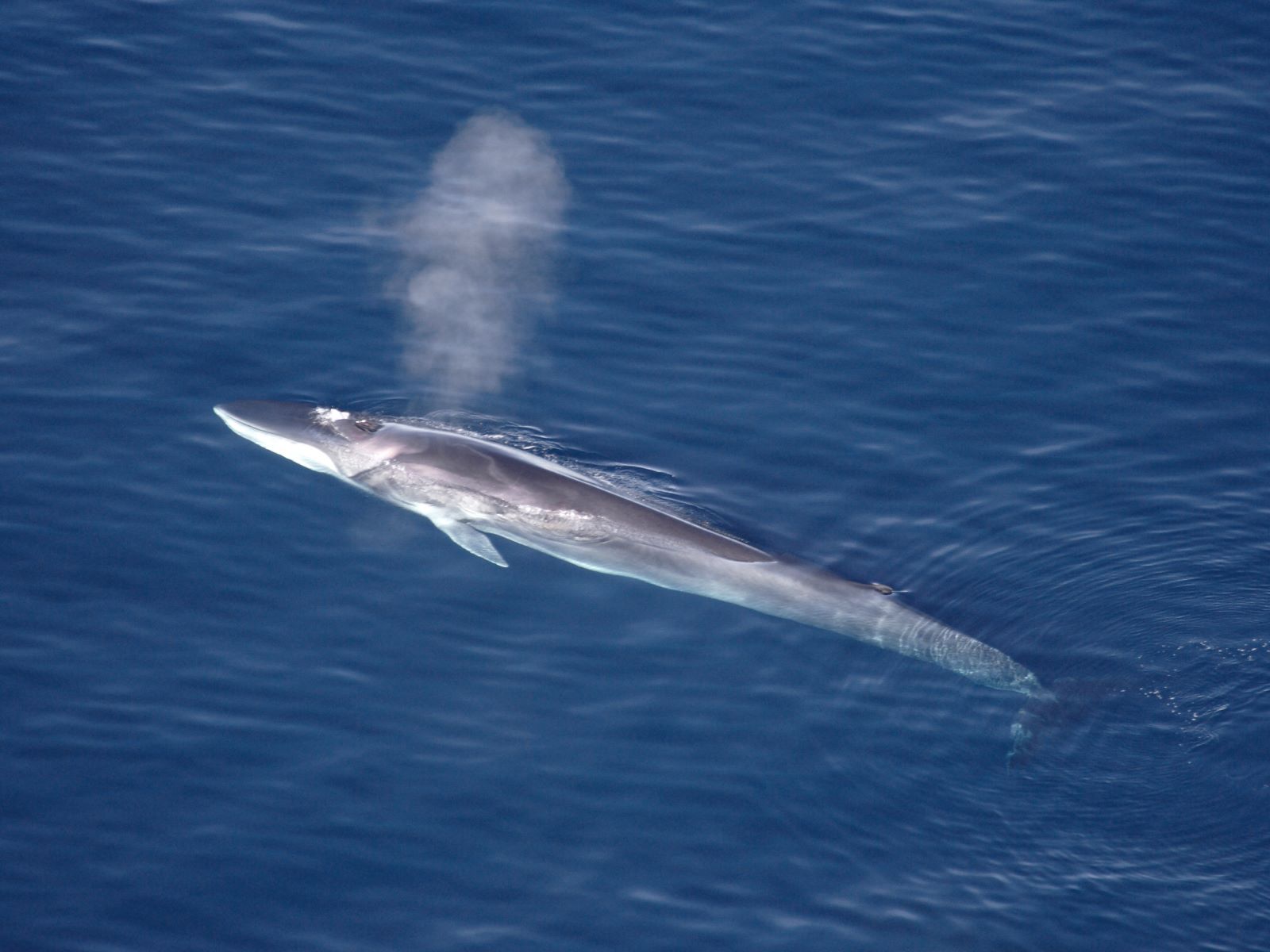
Ever wondered about the giants of the ocean? Yes, I'm talking about fin whales, those majestic creatures that glide through the water with such grace and power. These marine giants hold a treasure trove of fascinating facts that many of us are unaware of. From their incredible size to their unique feeding habits, fin whales are truly remarkable. Did you know that fin whales are the second-largest species of whale in the world? That's right, only second to the blue whale! In this blog post, we'll dive into 12 amazing facts about fin whales that will surely leave you in awe. Get ready to be amazed by the wonders of these gentle giants of the sea.
Key Takeaways:
- Fin whales are the second-largest species of whale, known for their speed and sleekness. They have a unique asymmetrical jaw coloring and can dive to depths of over 1,000 feet.
- Fin whales communicate through low-frequency sounds and are skilled lunge feeders, consuming small fish, squid, and krill. Their populations have shown signs of recovery due to conservation efforts.
What Are Fin Whales?
Fin whales, second only to blue whales in size, are majestic creatures of the ocean. These marine giants can grow up to 85 feet long, making them the second-largest species of whale. Known for their speed and sleekness, they've earned the nickname "the greyhounds of the sea." Their distinct feature is the asymmetrical coloring of their lower jaw, white on the right side and dark on the left.
Where Do Fin Whales Live?
Fin whales have a global distribution, inhabiting all major oceans, from polar to tropical waters. They prefer deep, offshore waters, making sightings from land rare. Migration patterns are observed, with these whales traveling to higher latitudes during the summer for feeding and returning to lower latitudes in the winter to breed.
Fin Whale Diet: What Do They Eat?
- Fin whales are filter feeders, primarily consuming small schooling fish, squid, and krill. They employ a method known as lunge feeding, where they accelerate towards a swarm of prey with their mouths open, engulfing a large volume of water and prey. Then, they filter the water out through their baleen plates, trapping the food inside to be swallowed.
How Do Fin Whales Communicate?
- Communication among fin whales involves low-frequency sounds, which can travel long distances underwater. These sounds are used for navigation, feeding, and maintaining social connections within their pods. Scientists believe that each sound serves a specific purpose, although much about their communication remains a mystery.
The Social Structure of Fin Whales
- Unlike some whale species that travel in large, cohesive groups, fin whales are often found alone or in small, transient groups. During feeding seasons, they may gather in larger numbers to take advantage of abundant food sources.
Threats to Fin Whale Populations
-
Historically, fin whales were heavily targeted by commercial whaling, which drastically reduced their numbers. Today, they face threats from ship strikes and entanglement in fishing gear. Climate change also poses a significant threat by altering the distribution of their prey, which can affect their feeding efficiency and reproductive success.
-
Despite these challenges, fin whale populations have shown signs of recovery, thanks in part to international conservation efforts and whaling bans.
Fin Whales and Human Interaction
-
Fin whales are a popular species for whale watchers, offering a breathtaking sight for those lucky enough to encounter them. However, their preference for deep waters means that such encounters are relatively rare compared to other whale species.
-
Research and conservation efforts continue to play a crucial role in understanding fin whales better and ensuring their survival. Through tagging and tracking, scientists can study their migration patterns, breeding habits, and social structures.
The Unique Features of Fin Whales
-
One of the most striking features of fin whales is their asymmetrical jaw coloring, which is unique among whale species. This feature is thought to play a role in their feeding strategy, although the exact reason remains unknown.
-
Fin whales can dive to depths of over 1,000 feet and hold their breath for up to 20 minutes. These deep dives are typically for feeding purposes.
-
Despite their enormous size, fin whales are incredibly agile swimmers, capable of reaching speeds up to 23 miles per hour.
-
The fin whale's blow, or spout, is a tall, columnar shape that can reach heights of up to 20 feet, making it a distinctive sight for observers.
-
Fin whales have a lifespan of up to 90 years, although reaching such an age is rare. Their longevity, combined with their size and speed, makes them one of the ocean's most remarkable inhabitants.
A Final Splash of Whale Wisdom
We've dived deep into the world of fin whales, uncovering some truly fascinating facts about these gentle giants. From their impressive size and speed to their unique feeding habits and vocalizations, fin whales are a testament to the wonders of marine life. Their role in the ecosystem is as vast as the oceans they inhabit, reminding us of the interconnectedness of all living things. As we surface from this deep dive, let's carry with us a renewed sense of awe for these magnificent creatures and a commitment to protecting their home. After all, understanding and appreciating the marvels of the natural world is the first step towards conserving it for future generations. So, next time you're gazing out at the vast ocean, remember the incredible fin whale, swimming silently in the blue depths, and know that our world is all the richer for their presence.
Frequently Asked Questions
Was this page helpful?
Our commitment to delivering trustworthy and engaging content is at the heart of what we do. Each fact on our site is contributed by real users like you, bringing a wealth of diverse insights and information. To ensure the highest standards of accuracy and reliability, our dedicated editors meticulously review each submission. This process guarantees that the facts we share are not only fascinating but also credible. Trust in our commitment to quality and authenticity as you explore and learn with us.


